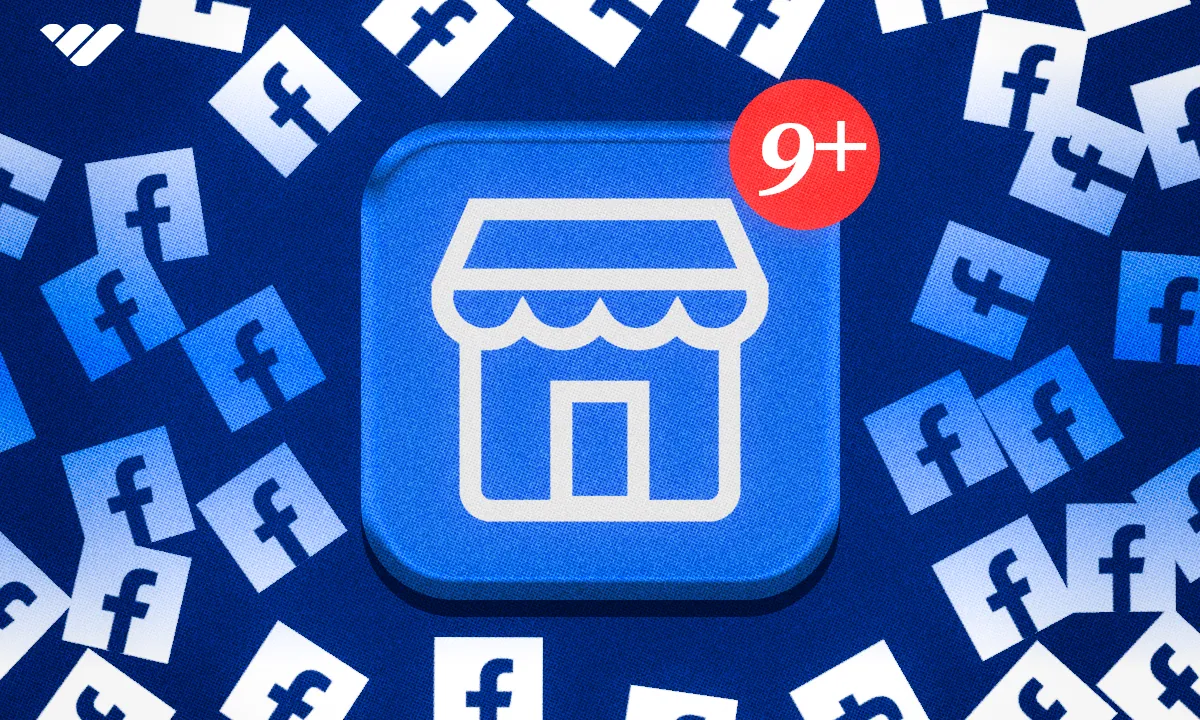Do you want to sell on Facebook marketplace? Learn how with this step-by-step guide.
Key takeaways
- Facebook Marketplace lets you sell locally with zero fees, making it ideal for beginners and small businesses.
- Create effective listings by adding quality photos, detailed descriptions, and accurate pricing to attract buyers.
- Boost visibility by promoting listings through Facebook Ads or sharing in relevant Facebook community groups.
Originally launched in 2004, Facebook is now the most used social media platform in the world with over three billion monthly active users. It’s well known for its versatility—you can share photos, create groups around certain passions, and of course, sell all kinds of items on Facebook Marketplace. In fact, Facebook has four times as many customers as Amazon!
So it comes as no surprise that Facebook marketplace is an extremely useful tool for sellers who want to sell their items on a simple and straightforward platform. Sound interesting? Then keep reading and find out how to sell on Facebook Marketplace.
What is Facebook Marketplace?
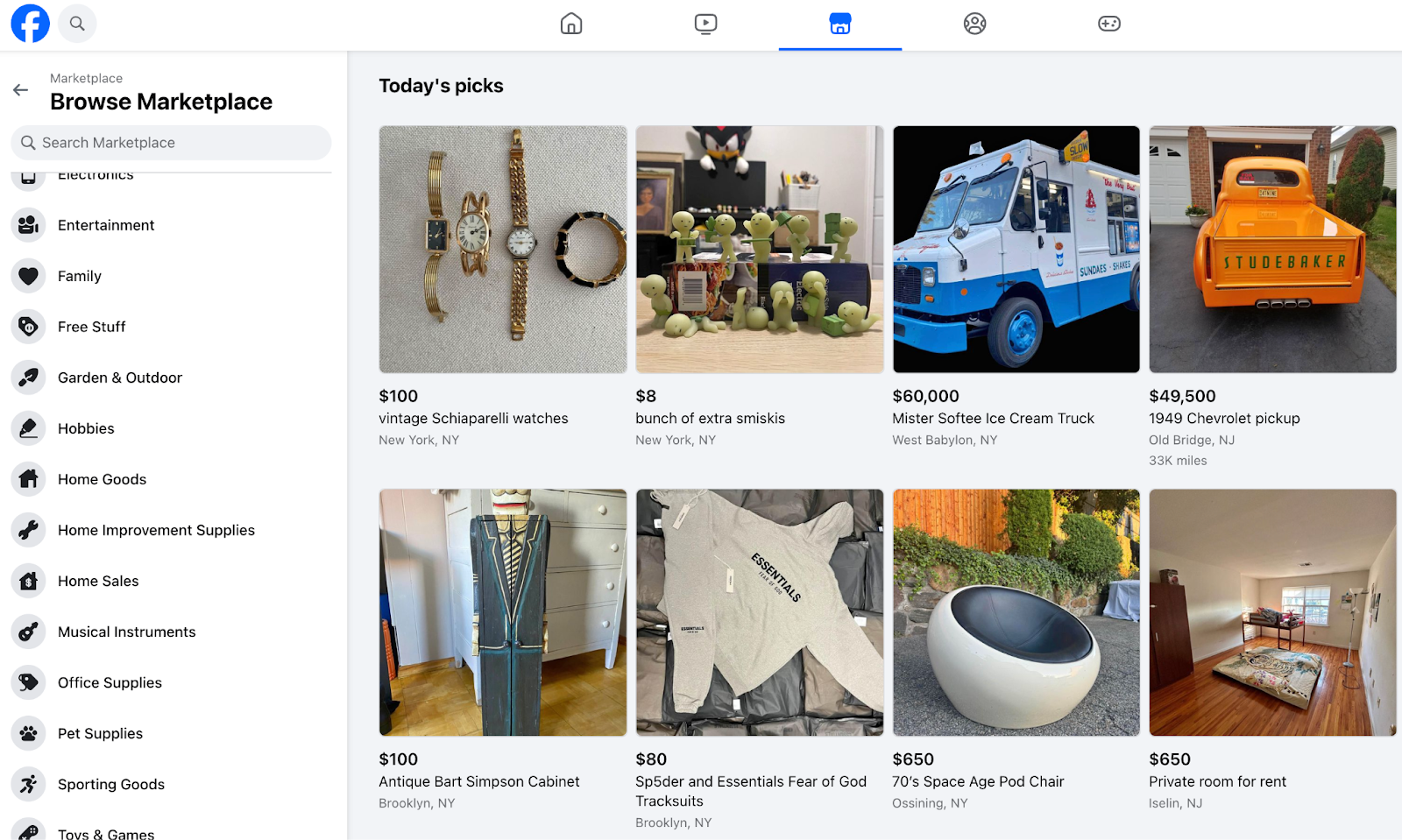
Facebook Marketplace is a feature integrated directly into Facebook that allows users to buy and sell items. It’s directly linked to your Facebook profile, so you don’t need to worry about setting up a new account.
It provides a convenient way for individual sellers and small businesses to do business quickly by listing products and selling in their area. It automatically filters listings based on the user’s location, making it easier for potential buyers to find items where they live. There’s also an option to ship items, so it essentially turns into eBay (but you don’t need to use that feature).
To understand how Facebook Marketplace operates, some elements should be considered:
- Item Listings: Sellers can create listings by adding photos, descriptions, prices, and specifying the category. New and used goods can be sold on the marketplace.
- Browsing and Searching: Buyers can browse through different categories such as electronics, vehicles, home goods, and more. They can also use filters to narrow down their research by location, price, and item condition.
- Communication: Transactions are initiated through Facebook Messenger, where buyers and sellers can negotiate prices, payment methods, and decide how the delivery of the item will be done.
- Listing Partners Connectors: If you already use platforms like BigCommerce (Shopify coming soon), then you can list your current inventory on Marketplace
- Sponsored Listings: Listings can be promoted through paid ads to increase visibility among targeted audiences.
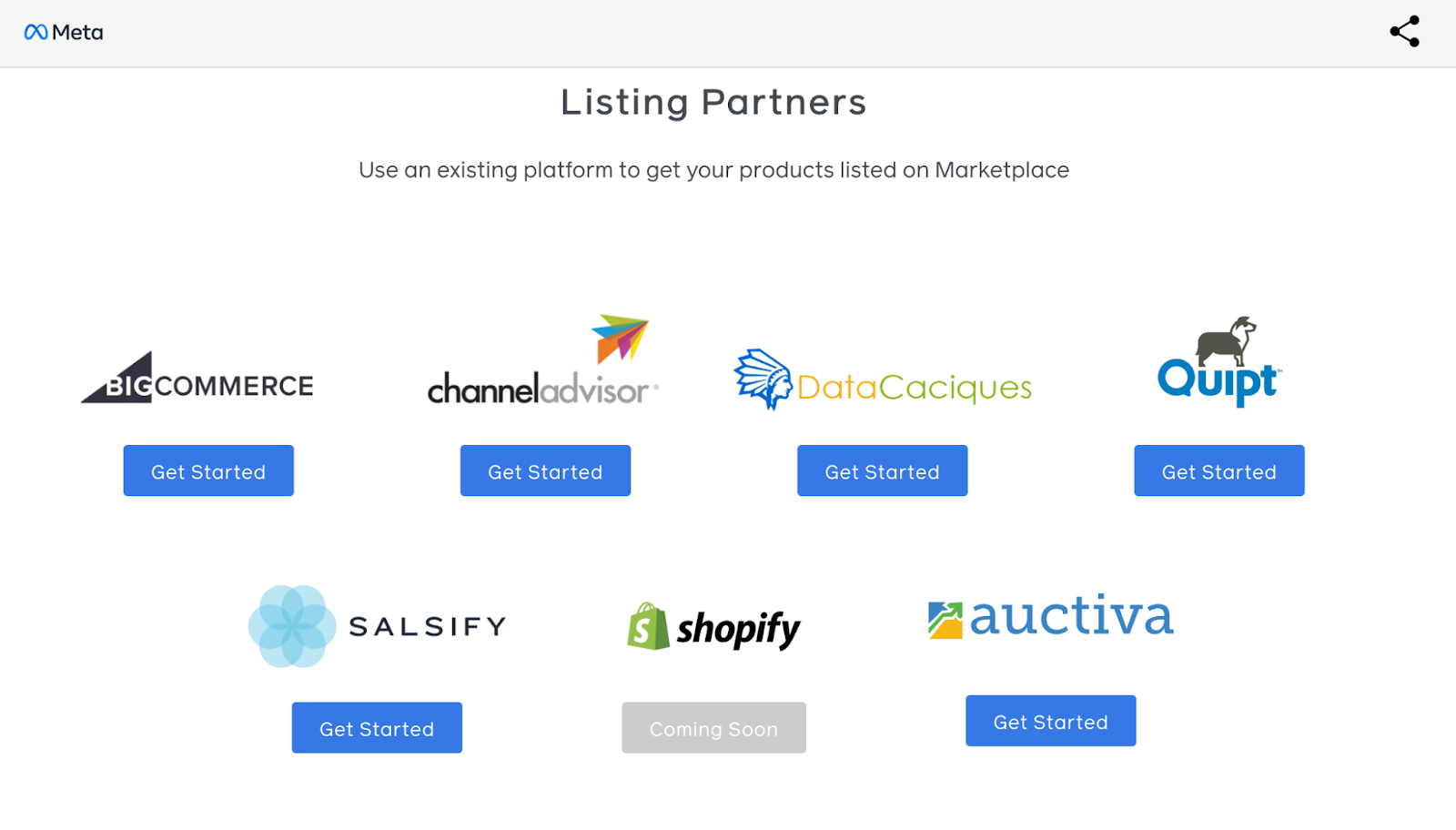
Why Sell on Facebook Marketplace?
Selling on Facebook Marketplace is a great option for beginner sellers and small businesses because of its ease of use and focus on local sales. It’s basically just setting up a listing and communicating with a buyer—you don’t need to run ads or set up any official tax documents. Additionally, the option of direct contact via messenger facilitates the negotiation process so you’re not paying any transaction fees to Facebook.
Other reasons why you should sell on Facebook Marketplace:
It has a massive user base
Facebook has billions of active users, providing a vast potential audience for your listings. This wide reach increases the chances of finding buyers quickly in your region, whether you’re selling a brand new product or a used item.
It is extremely easy to use
Being directly integrated with Facebook’s existing platform makes Marketplace very user friendly. If you already have a Facebook account, you can start selling with just a few clicks. The listing process is incredibly straightforward, with options to upload photos, set prices, and add descriptions quickly.
And since Facebook Marketplace is connected to your profile, there’s the added level of trust to consider as well. Potential customers can view your profile, see mutual friends—if you’re using a personal account—and even check out previous ratings and reviews. It’s an added level of transparency that helps reduce fears associated with buying things online.
There are no fees
Unlike other online marketplaces that charge fees to list or sell items, Facebook Marketplace is free to use. If you’re selling items locally and arranging in-person pick up, there are no listing or selling fees.
But if you choose to ship items through Facebook Marketplace, a selling fee is typically applied. Not every country has shipping options available, so this may vary.
The marketplace has a great local focus
Facebook Marketplace is designed to connect you with potential buyers in your area. This local focus is ideal for selling items like furniture, vehicles, or other large goods that would be costly to ship. While some may consider local reach to be a limiting factor for doing online business, it’s great for short, quick sales. It also simplifies the logistics of meeting up for transactions.
Why I Prefer Facebook Marketplace Over eBay
Selling items on eBay is how I got my true start in ecommerce. Growing up, I’d sell (mainly) pairs of Air Jordans on eBay. Back then, they charged a 10% transaction fee (I think it’s closer to 15% these days) and I’d typically make the buyer pay for shipping.
So this requires finding a separate box to ship them in, going to the post office, printing off a label, and then your profits get eaten into by eBay and PayPal.
Today, I solely sell on Facebook Marketplace. Listing items is a lot quicker, I never ship things, and I can get paid via Venmo or with cash. The only downside is that you can reach more buyers on eBay, but if you live in a bigger city it shouldn’t be an issue.
How to Sell on Facebook Marketplace
Selling on Facebook Marketplace is a simple process, no matter if you’re an individual seller or have a formal business. When you sell something on Marketplace, you create a public listing that can be seen by everyone on Marketplace, in Feed, in search, and other places on and off Facebook.
Here's a step-by-step guide on how to sell on Facebook Marketplace.
1. Access Facebook Marketplace
If you’re on mobile, open your Facebook app and look for the Marketplace icon (a small storefront) at the button of the screen on iOS or at the top on Android. And if you’re on a desktop, go to Facebook on your computer and the Marketplace is on top center of the screen.
2. Create a listing
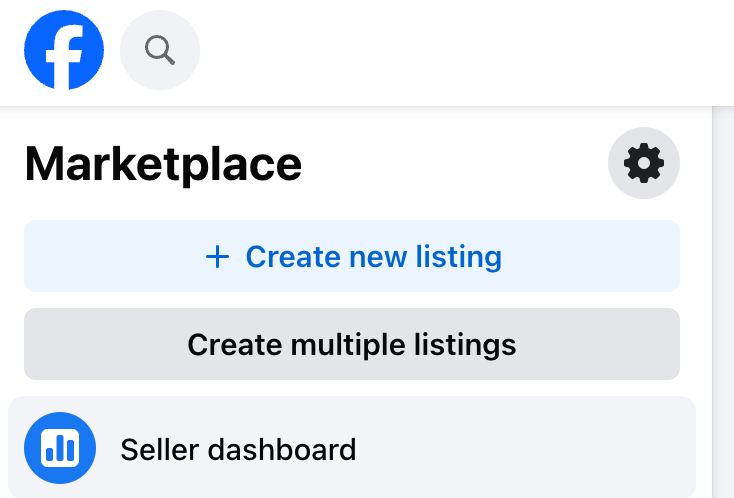
Click on “+ Create new listing,” this option is prominently displayed on the Facebook Marketplace homepage. After that, choose your listing type. You are prompted to select what type of items you’re selling.
It’s important to consider that Facebook Marketplace has a set of rules and not all items are accepted to be put on sale in the marketplace. We’ll be talking more about this later, but the main types of items you can sell are:
- Physical Items: Such as electronics, clothing, etc.
- Vehicles for Sale: If you’re selling a car, motorcycle, or other vehicle.
- Property for Sale: For listing real estate, like apartments, houses, or commercial properties.
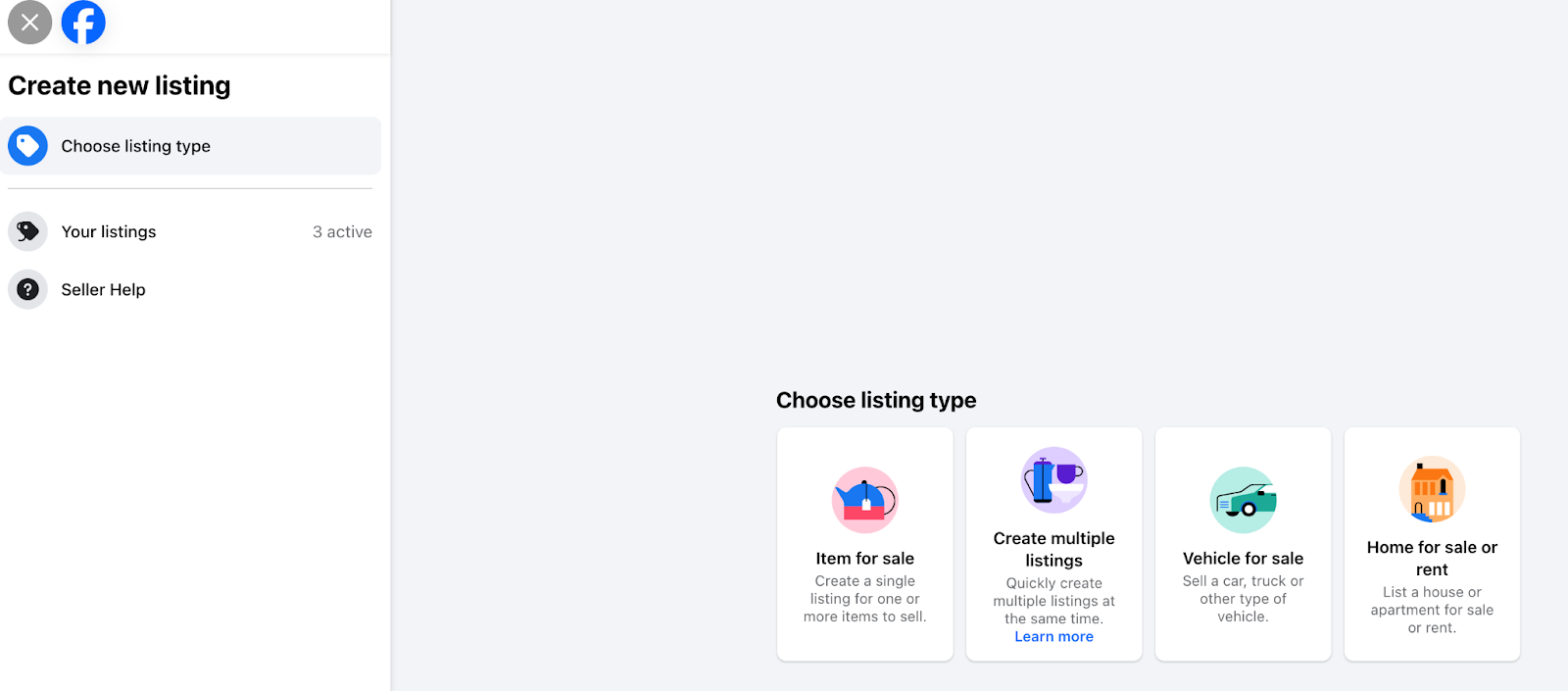
Among a few other things, Facebook doesn’t let you sell digital products. But don’t worry, if you sell digital products, Whop is the best place to do it. We have a thriving marketplace of customers looking for the knowledge that you have.
3. Add high-quality photos
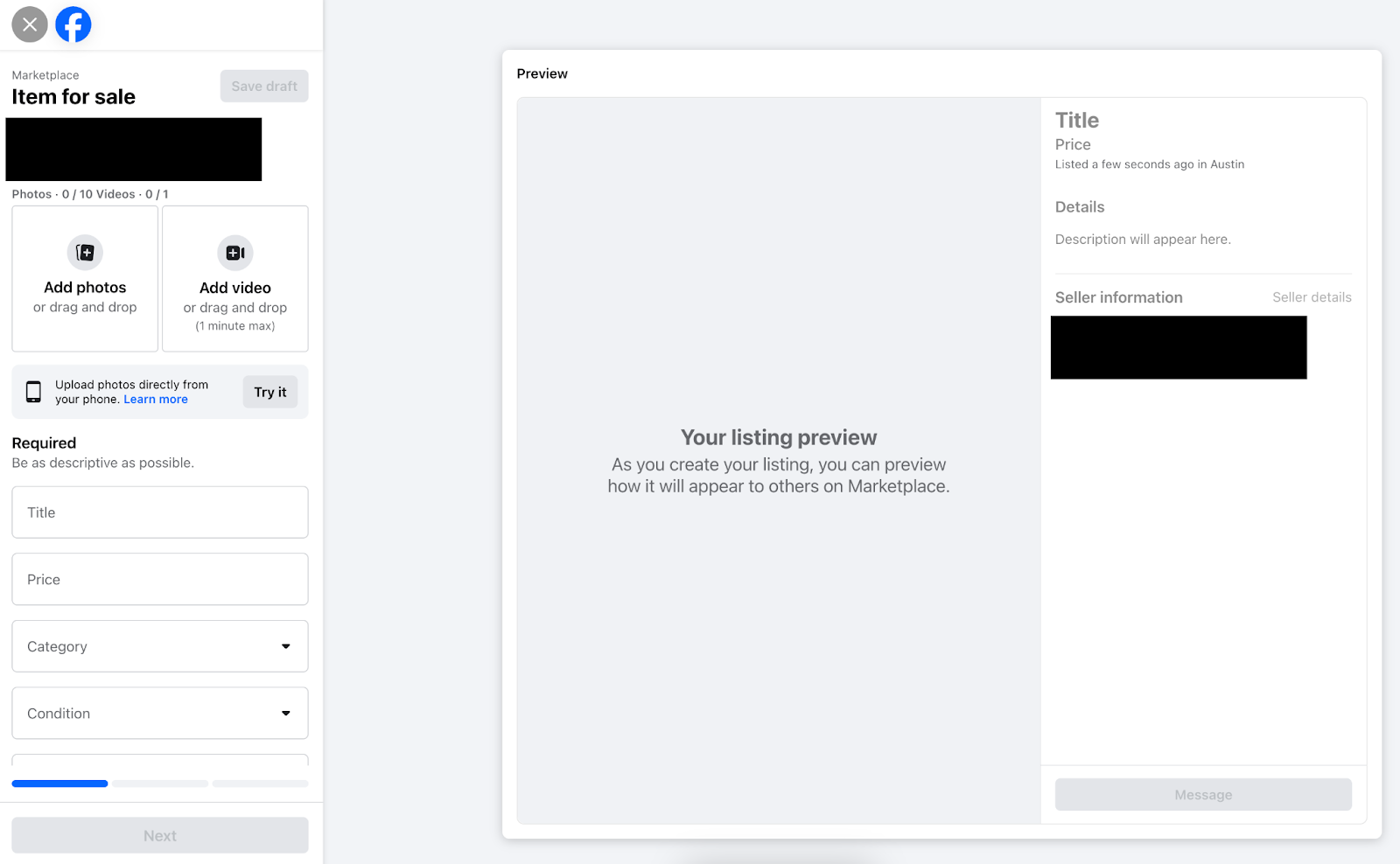
Click on the photo icon or “add photos” button to upload pictures of the item you’re selling. Facebook allows multiple photos, so try to include images from every angle possible, highlighting key features or any flaws a product may have if it’s used.
4. Write an enticing product listing
When adding a product, you need to be as specific as possible about its description. Do not omit or change any information and be clear about all details so that potential buyers do not have any doubts—or concerns—when choosing your item.
Let's be thorough and go through each of the sections that must be filled out to set your product to be sold on Facebook Marketplace:
- Title: Create a clear, concise title that accurately describes your item (e.g.,”Monitor UHD Samsung 28" 4K, HDMI, Excellent Condition). Always specify if the item is used or not on the title.
- Price: Set your asking price. If you’re open to negotiation, consider setting the price slightly higher to leave room for bargaining via Facebook Messenger.
- Category: Select the appropriate category for your item. This helps interested buyers find your listings.
- Condition: Choose the condition of the product (New, Used - Like New, Used - Good, Used - Fair).
- Description: Provide a detailed description of the item. Include key information such as size, color, brand, condition, and any other relevant details buyers may want to know.
- Location: Your location is usually auto-filled based on your Facebook profile, but you can change if you want.
- Availability: You can list a single item or a stock, if you have more than one unit.
5. Publish your listings and manage inquiries
After filling all the details, review your listing. Once you’re finished, click “post” to make your product live on Facebook Marketplace.
Potential buyers will contact you through Facebook Messenger, so be ready to respond to inquiries, answering questions they might have and negotiating the final price of your products if necessary. Once you’ve agreed on a price, coordinate with the buyer for payment and delivery. For local sales, agree on a safe public location to meet. And if shipping is possible, discuss proper payment methods.
Once the item is sold, don’t forget to go back to your listing and mark the product as “sold” to prevent further inquiries and to keep track of your sales.
6. Market your listings
Of course, simply listing items on the marketplace doesn’t guarantee that they’ll be found by interested buyers. In my experience, it typically works but if not, Facebook allows you to use Facebook Ads to boost the visibility of your product listings after they’re published, allowing them to be found by a much larger number of buyers.
Facebook also has many communities of buyers where you can advertise your products, which is especially effective if your product is of general interest to the respective community. Advertising games for sale to a Facebook group about video games is sure to attract interested customers.
- How to Monetize a Facebook Page - Guide to Making Money Online
- How to Promote Your Facebook Group (and Make Money With It)
- Use These 9 Facebook Marketplace Alternatives
What Can and Can’t Be Sold on Facebook Marketplace
As mentioned before, Facebook Marketplace has specific guidelines regarding what can and cannot be sold on the site. Because of the individual sales model, these rules are designed to ensure safety, legality, and compliance with Facebook’s policies.
Here’s a detailed overview of what can and can’t be sold on Facebook Marketplace.
Can be Sold on Facebook Marketplace:
Physical Goods
- New and Used Items: Including electronics, furniture, clothing, vehicles, and more.
- Handmade Items: Products like jewelry, crafts, paintings, and objects of art.
- Collectibles: Items like trading cards, action figures, comics, and memorabilia.
Real Estate and Rental Properties
- Homes for Sale or Rent: You can list houses, apartments, and other properties for sale or rent.
- Vacation Rentals: Short-term vacation rentals are also allowed.
Vehicles
- Cars, Trucks, and Motorcycles: You can sell personal vehicles, even boats.
- Parts and Accessories: Vehicle parts, tires, and other accessories can also be listed.
Tickets
- Event Tickets: You can sell tickets for events, as long as the sale complies with local laws.
Can’t Be Sold on Facebook Marketplace
Ilegal, Prohibited, or Dangerous Items
- Drug Paraphernalia: This includes prescription drugs.
- Weapons and Ammunition: Firearms, explosives, and related accessories are strictly prohibited despite possible control regulations of any region.
- Tobacco and Alcohol: Selling cigarettes, vaping products, or alcohol is not allowed.
Services
- Non-tangible Services: Facebook Marketplace is intended for physical products, so services like cleaning, online courses, or freelancing of any kind are not allowed to be listed on the platform.
Animals
- Pets: The sale of animals, including pets like dogs, cats, and other livestock is not allowed, only the sale of pet products like toys and accessories.
- Animal Parts: Products made from animal parts, such as ivory or fur.
Counterfeit or Unauthorized Digital Products
- Fake Products: Counterfeit goods, like knock-off designer items.
- Unauthorized Digital Products: Items like pirated software, digital codes, unauthorized digital products in general.
Recalled Products
- Safety-Related Recalls: Items that have been recalled by manufacturer or government agencies due to safety concerns.
Is Facebook Marketplace Right for You? The Disadvantages of Selling on Facebook
While it's a reasonable model for sellers and small businesses who prefer to operate quickly, directly, and without major complications, Facebook Marketplace has certain disadvantages for sellers who might want to use the platform more consistently.
First, there are limited payment and shipping options, which means transactions often need to be handled through cash or third-party apps, increasing the risk of non-payment or fraud.
Second, safety concerns exist since basically anyone with a Facebook account can list items, so you may encounter scams or unreliable buyers.
Lastly, while the platform is great for local sales, it offers less visibility for non-local items, limiting your reach if you're looking to sell to a broader audience.
If You Want to Sell Digital Products, Whop is the Best Place for You
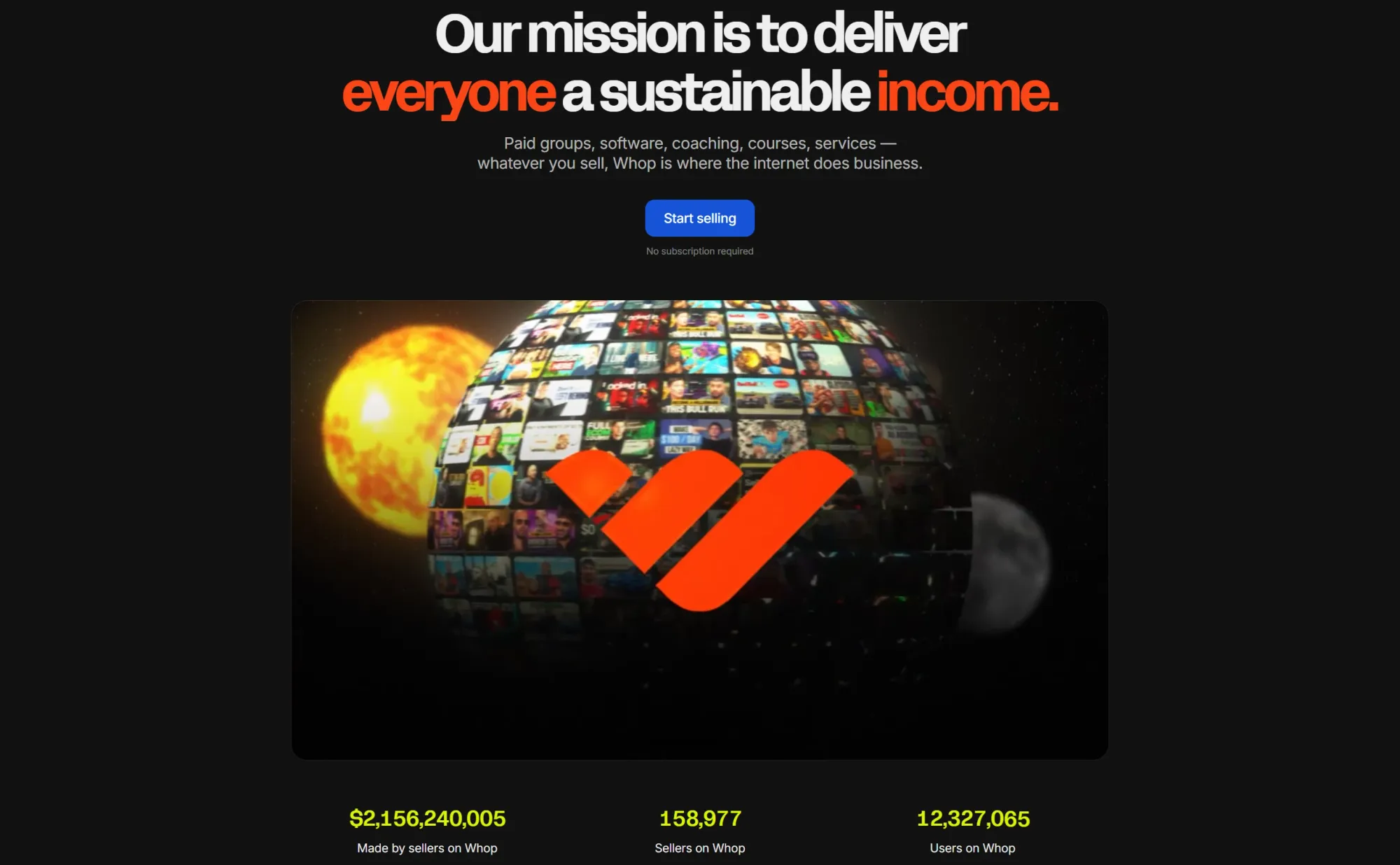
Selling digital products is a business idea with huge potential for profit - but unfortunately, you cannot sell digital products on Facebook. That means that while you can promote your online courses, ebooks, downloads and paid community access in your Facebook group and on your Facebook pages, you can't actually sell the products on the platform.
That's where Whop comes in. With Whop, you’re not just limited to launching any type of digital product—you also have the opportunity to create your own whop, a space that acts as your personal online hub which you can host for free. Your whop comes with powerful, user-friendly native apps that allow you to sell all kinds of digital products whilst also hosting a private online community.
If you've been hesitating to create and launch a digital product, now is the perfect time. By joining Whop you can position yourself among the early creators who are already capitalizing on the groundbreaking platform that’s redefining the future of ecommerce.
You can leverage all of our features:
- User-friendly, powerful dashboard
- Payment system with integrations and multiple options, including crypto and BNPL
- No monthly fees to sell, with an industry leading 2.7% + $0.30 fee
- Exposure to an ever-increasing marketplace of targeted potential buyers (for an extra fee)
- Incredible customer support, including 24/7 live chat and free video calls
- And much more
All of this is available on Whop, meaning that there are no hidden fees for third-party integrations. Join the group entrepreneurs who are cashing in with digital product businesses, sign up to sell on Whop today and make your dreams come true.
How to Sell on Facebook Marketplace FAQs
The frequently asked questions about selling on Facebook Marketplace
Why Should I Sell on Facebook Marketplace?
Selling on Facebook Marketplace is advantageous because it offers access to a massive audience, increasing the likelihood of a quick sale, especially for popular items. Additionally, for most local listings, there are no fees, allowing you to keep more of your profit compared to other platforms.
What Types of Items Can I Sell on Facebook Marketplace?
As a seller, you can list a wide range of physical goods on Facebook Marketplace, including electronics, clothing, furniture, vehicles, and home goods. Handmade items, collectibles, and even real estate or rental properties can also be listed. However, digital products and services, like online courses, are prohibited on Facebook Marketplace.
Why Should You Trust Us
Joe Niehaus is an ecommerce professional and an experienced content writer at Whop, in addition to actively selling on Facebook Marketplace. With extensive expertise in overseeing affiliate programs for various ecommerce brands, he has also shared his insights with leading publications such as Business Insider, GQ, and Travel + Leisure.


